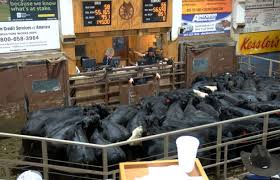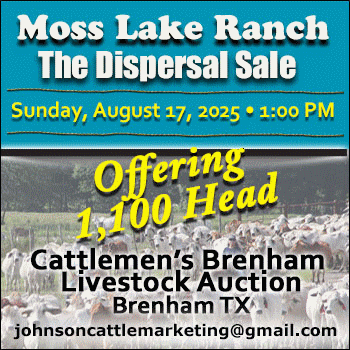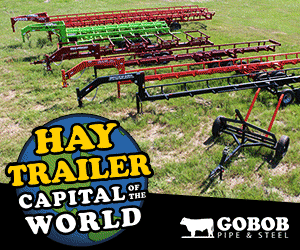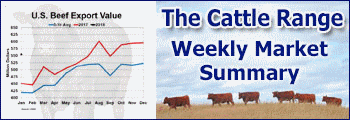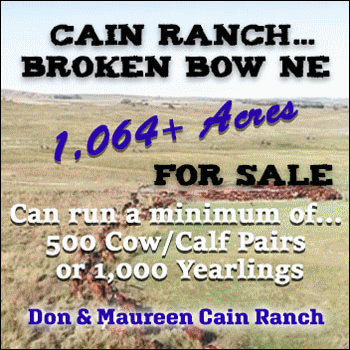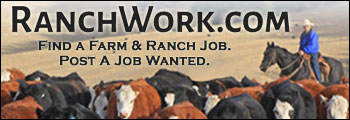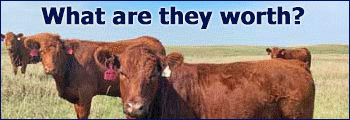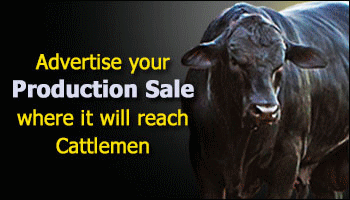“The first major trend we’re going to be seeing this year is herd liquidation,” said Elliott Dennis, agricultural economics assistant professor at the University of Nebraska-Lincoln. “This will be our third year that we’ve experienced herd liquidation.”
The beef cow slaughter is up 10% over 2020, said Dennis during a presentation at the Driftless Region Beef Conference, presented by University of Illinois Extension, Iowa State University Extension and Outreach and University of Wisconsin Extension.
The percent of total cattle on feed that are heifers follows the cattle cycle, Dennis said.
“When prices are lower we send a lot of heifers to market and when prices are high we retain the heifers to capture feeder cattle prices,” he said.
This year is similar to the period of 2012 to 2014 for hay stocks.
“We’ve had a large decrease in hay stocks and one of the reasons is we had terrible forage production in the Western states,” Dennis said. “Entire herds have been liquidated in North Dakota.”
Market incentives are signaling cattlemen to sell cull cows.
“Cow/calf producers receive 15% to 30% of total revenues from selling cull cows so making a decision when to sell the animal is important,” Dennis said.
“A lot has to do with consumers’ demand for beef because we import ground beef and export steaks,” he said. “With Australia rebuilding their herd, that’s where we get a lot of ground beef and there is not as much out there.”
The cost to raise a calf versus the value of the cutter cow is typically about 40%, Dennis said.
“For the last two years it’s been 50% so it’s more profitable to sell cull cows so there are a lot of factors driving herd liquidation, not just the drought,” he said.
For the fed cattle market, Dennis said, the primary driver is feedstuffs.
“The corn prices are high, we have a reduced stocks-to-use ratio and we also have a reduced amount of corn coming out of Brazil,” Dennis said.
“Feeding costs have been pretty consistent over the five-year average into 2020, but in 2021 there was a run-up in prices,” he said. “Even though we experienced high feed prices into 2021, there were high placements because there was a lot of optimism that market prices would rebound, so we kept pens full.”
Cattlemen in Iowa, Minnesota and Nebraska, Dennis said, tend to place cattle in the 800- to 1,000-pound range.
“In Nebraska, we will place around 40% of all cattle on feed in this range,” he said.
However in Texas, Oklahoma and New Mexico, cattle placements are more skewed to 500-pound cattle.
“Now in Iowa and Nebraska, placements have shifted away from heavy-weight to middle-weight cattle,” Dennis said. “And Texas and Oklahoma are placing 45% of all cattle on feed at less than 600 pounds.”
For beef exports, Dennis said, U.S. beef is going to become more globalized.
“Countries can get grass-finished beef from a lot of places like Argentina, Brazil and New Zealand,” he said. “The U.S. specializes in grain-finished beef, so our beef tends to be more flavorful with the grade of marbling.”
Trade agreements have an impact on the U.S. cattle market.
“With the USMCA and the reauthorization of the Japan and the South Korea agreements, we’re starting to see the effects of the trade agreements ripple down through the supply chain,” Dennis said. “We’ve been able to export a lot to Mexico.”
Imports of beef from Canada into the United States are increasing, Dennis said.
“A lot of that is because they lost the Chinese market because Canada found an atypical case of BSE, so South Korea, the Philippines and China said you can’t ship beef to us,” he said.
It is not uncommon to find an atypical case of Bovine Spongiform Encephalopathy, Dennis said.
“Brazil found one back in September and Chinese also said they would not take beef from Brazil,” he said. “The U.S. market is the primary benefactor of this.”
In 2020, China was the third largest trading partner for U.S. beef, Dennis said.
“They can turn off the switch whenever they want and that can have a pretty sizable impact,” he said. “It could be a $5 to $7 swing in the fed cattle price if they were to leave the market.”
The labor issue in packing plants can have an impact on cattle markets.
“We have a historical low unemployment rate of 1 to 1.5% in Nebraska,” Dennis said. “There are not a lot of available people.”
In addition, when employees don’t show up for work, the plants can’t process cattle.
“There was a lot of pressure on the processing industry to make conditions suitable for workers during COVID,” Dennis said. “They implemented social-distancing measures which led to reduced capacity because they can’t process as many animals when the chain speeds are slower.”
